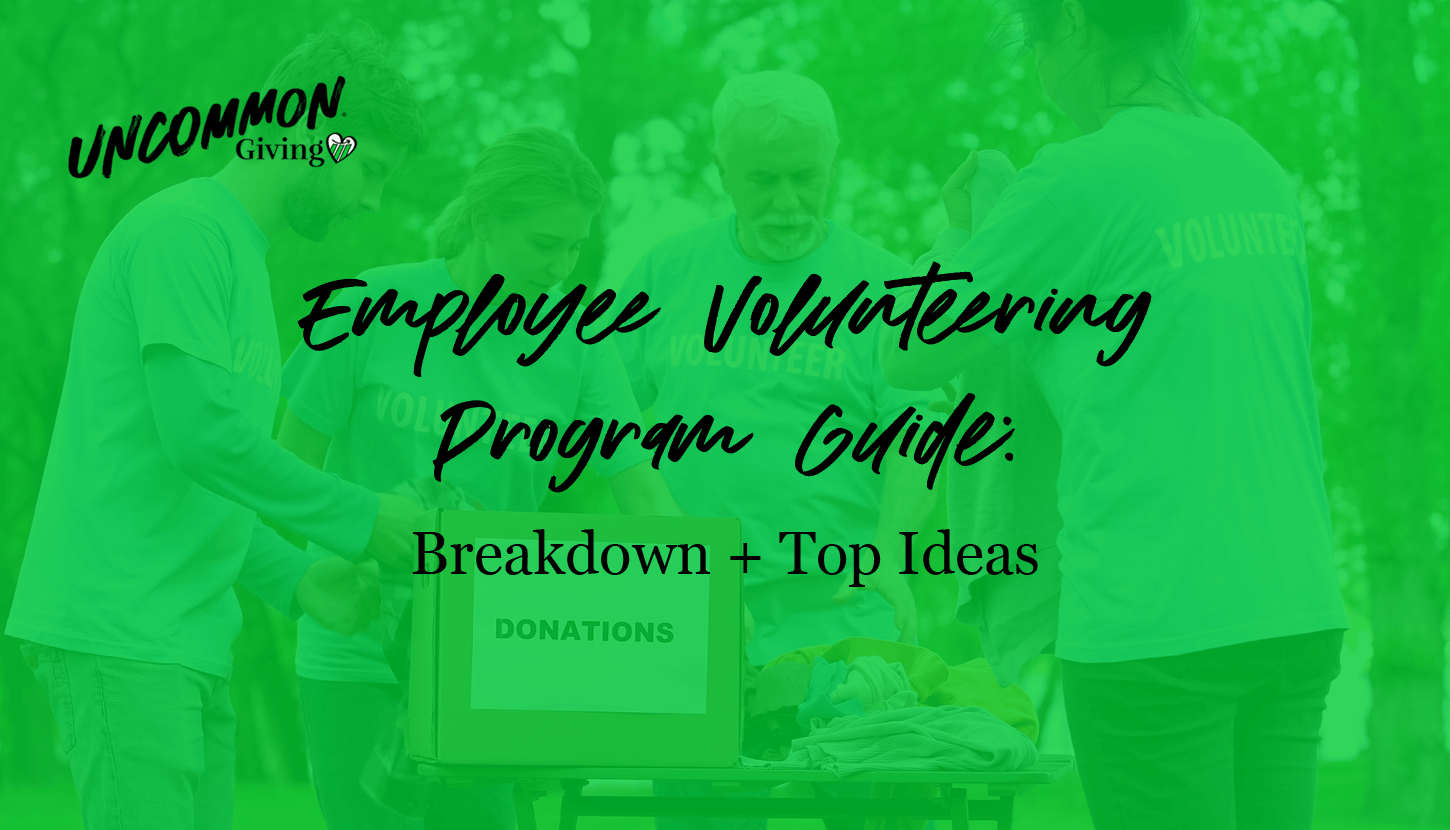Your company may have employees who always arrive on time, take care of their responsibilities, and deliver results—but that could be the extent of their engagement at work.
According to Gallup, 62% of employees worldwide are uninspired and doing only the bare minimum in their roles, undermining productivity and innovation. While there are many factors behind this global percentage, it’s safe to say that many employees don’t feel a sense of purpose in their work.
Many companies are adopting workplace giving programs, such as Dollars for Doers, as a solution. In this guide, we’ll walk through everything you need to know about Dollars for Doers, including:
- What Are Dollars for Doers Programs?
- How Dollars for Doers Programs Work
- The Benefits of Dollars for Doers
- Leading Examples of Dollars for Doers Companies
- 4 Tips to Boost Dollars for Doers Engagement
Dollars for Doers grants inspire employees to give back to their communities, build social connections, and find new meaning in their roles. By creating a Dollars for Doers program and investing in other corporate social responsibility (CSR) initiatives, you’ll be able to boost morale, strengthen your workplace culture, and make a lasting impact on the world.
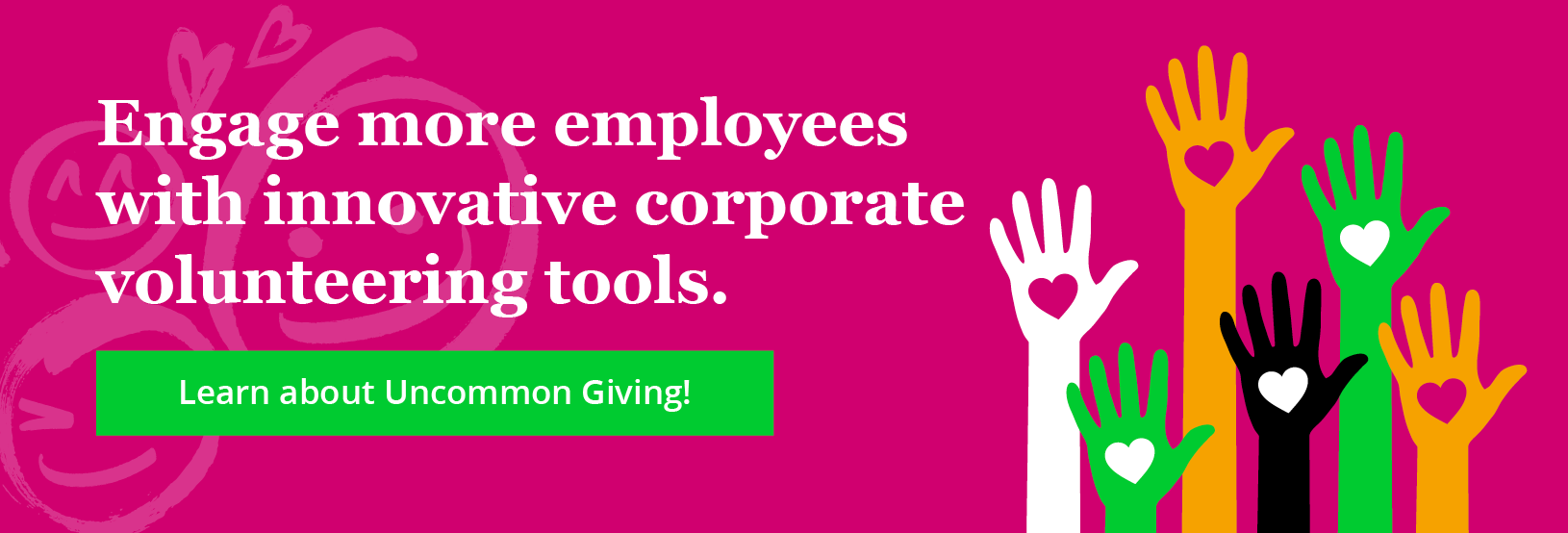
What Are Dollars for Doers Programs?
A Dollars for Doers program is a corporate giving program that encourages employee volunteerism by matching the hours they contribute to nonprofits with financial donations. In other words, when employees regularly volunteer with a nonprofit, their employer will amplify their impact by making a donation to that organization.
You’ll often hear these programs referred to by other names, such as:
- Volunteer grants
- Dollar for hour
- Matching time
- Matching volunteer hours
While 40% of Fortune 500 companies have a Dollars for Doers program, the average employee participation rests around 3%. That’s why it’s important to spread awareness of how these programs work, the benefits they provide, and ways employees can get involved.
How Dollars for Doers Programs Work
Many companies use corporate volunteering tools to manage their Dollars for Doers program and make it easy for employees to participate. While each company will have its own guidelines, the general Dollars for Doers process remains the same:
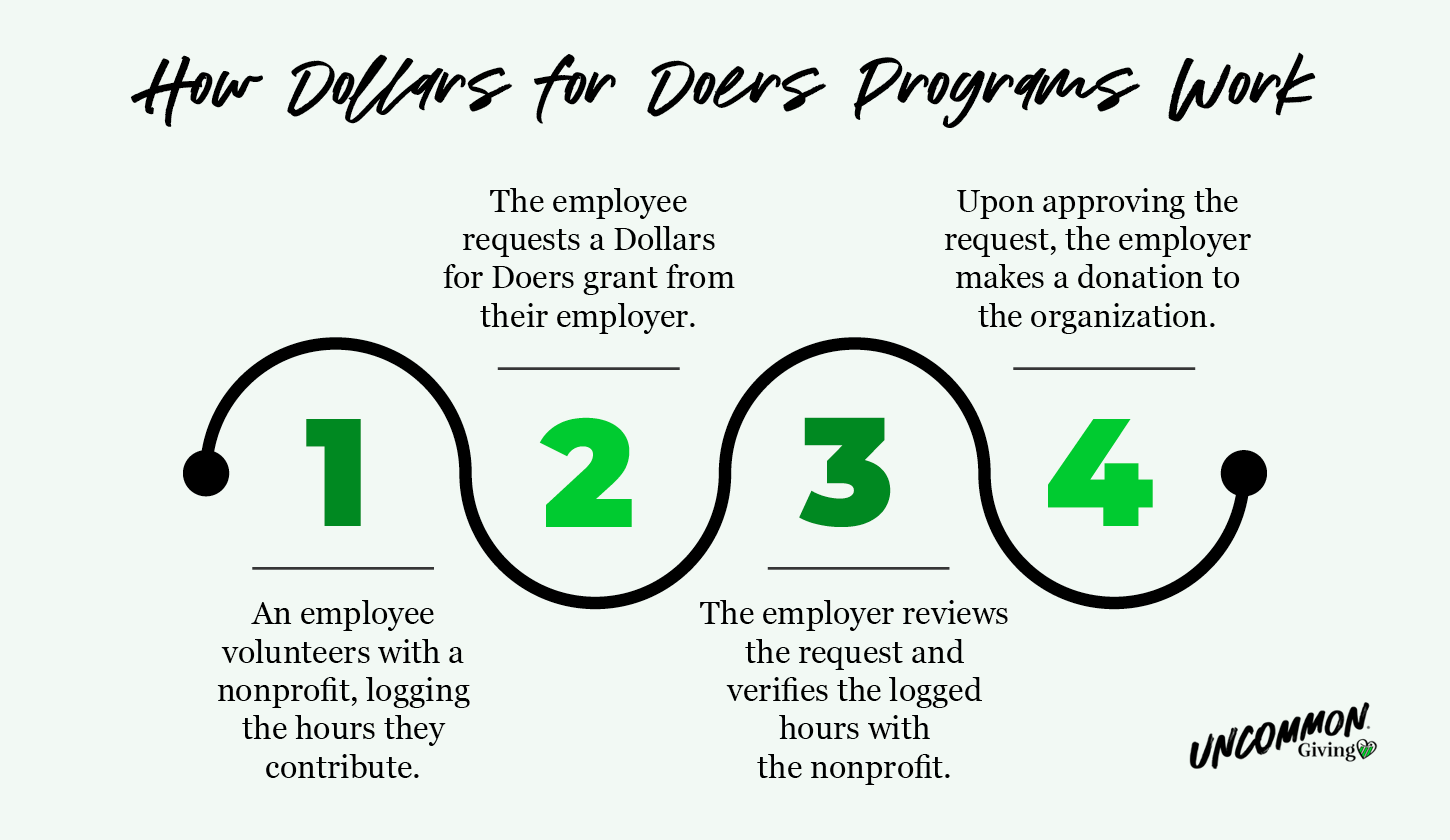
- An employee volunteers with a nonprofit, logging the hours they contribute.
- After volunteering, the employee requests a Dollars for Doers grant from their employer.
- The employer reviews the request and verifies the logged hours with the nonprofit.
- Upon approving the request, the employer makes a donation to the organization.
Some CSR platforms streamline these steps by automating approval based on the criteria set by your company.
Common Dollars for Doers Guidelines
By establishing clear Dollars for Doers criteria and requirements, companies can align expectations, ensure fair participation, and encourage employees to take advantage of this opportunity.
Typically, you’ll want to outline details such as:
- Employee eligibility. Your company could only allow full-time employees to request Dollars for Doers grants or extend participation to part-time and retired employees as well. Sometimes, even employees’ spouses can qualify!
- Nonprofit eligibility. Communicate which nonprofits are qualified for support through the program. Many businesses require organizations to have 501(c)(3) status to be eligible for a donation. Others specifically exclude political organizations, religious institutions, or nonprofits outside of a geographic location or niche.
- Minimum and maximum hours. For example, you might ask employees to volunteer at least 10 hours before they can request a Dollars for Doers grant for the nonprofit. You can also set a maximum amount of dollars you’ll donate per employee every year to avoid going over budget.
- Donation amount. Determine whether you’ll donate a set amount per hour volunteered or a specific sum when volunteers reach a certain threshold of hours. For reference, 80% of companies with Dollars for Doers programs award between $8 to $15 per hour volunteered.
- Deadlines. Especially if your company has an annual match limit per employee, make sure employees know when they need to submit their requests to make their contributions count. Many businesses choose the end of the calendar year or January 31 of the following year.
Include all of this information in a centrally-located document for employees to reference. You can even publish this on your website to improve transparency and accessibility.
Popular Dollars for Doers Frameworks
Similar to other types of corporate giving, Dollars for Doers programs are highly adaptable to your needs and employee preferences. Some of the most popular ways to structure your program include:
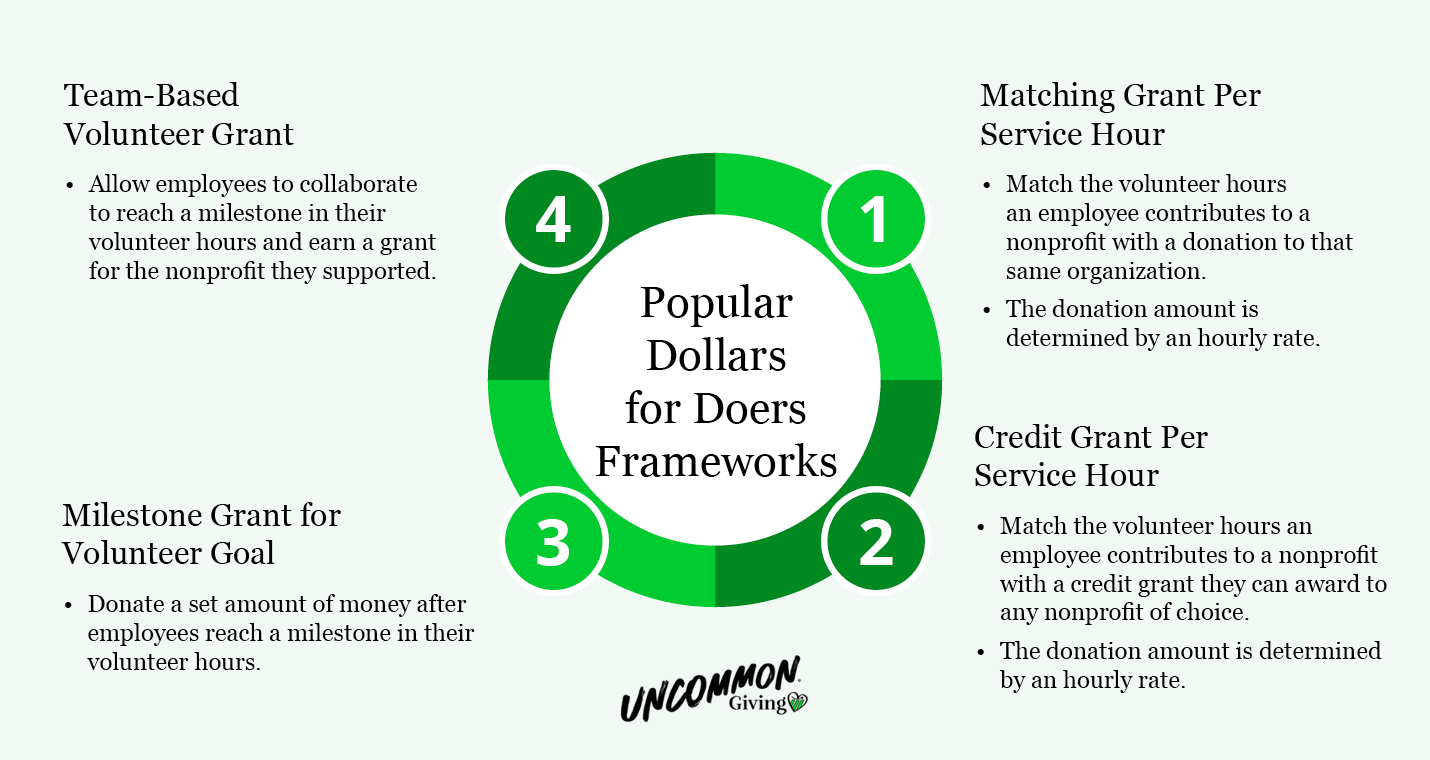
- Matching Grant Per Service Hour. Your company will match the volunteer hours an employee contributes to a nonprofit with a donation to that same organization, with the amount determined by an hourly rate. For example, if an employee volunteers 45 hours with a nonprofit, a company that matches $10/hour would make a $450 donation to the organization—factoring in any minimum requirements or match limits.
- Credit Grant Per Service Hour. Rather than donating to the nonprofit your employee volunteered with, you’ll provide a credit grant that they can award to any charitable organization. The amount will still depend on your hourly rate. Like the previous example, if an employee volunteers 45 hours, a company with a match rate of $10/hour would still grant a $450 donation. This donation, however, can go to any nonprofit of the employee’s choice.
- Milestone Grant for Volunteer Goal. Your company will donate a set amount of money after employees reach a milestone in their volunteer hours. For instance, you might award $600 after employees reach 50 volunteer hours and $1000 after they reach 80 hours. You can combine this framework with the ones above by adding an hourly rate per each hour an employee volunteers beyond the threshold.
- Team-Based Volunteer Grant. This framework allows employees to work together toward earning grants for a nonprofit, operating similarly to the milestone grants. A company might decide that, when teams of five or more employees volunteer with an organization for over 50 combined hours, it will award $2,500 to that nonprofit.
While you can implement one of these frameworks as is, feel free to combine or adjust them based on your budget, goals, and employee preferences.
What Are the Benefits of Dollars for Doers?
Like any company-wide initiative, launching a Dollars for Doers program takes an initial investment of time, planning, and resources. These statistics, however, illustrate exactly how your business can benefit from engaging employees in Dollars for Doers opportunities and other aspects of your CSR strategy:
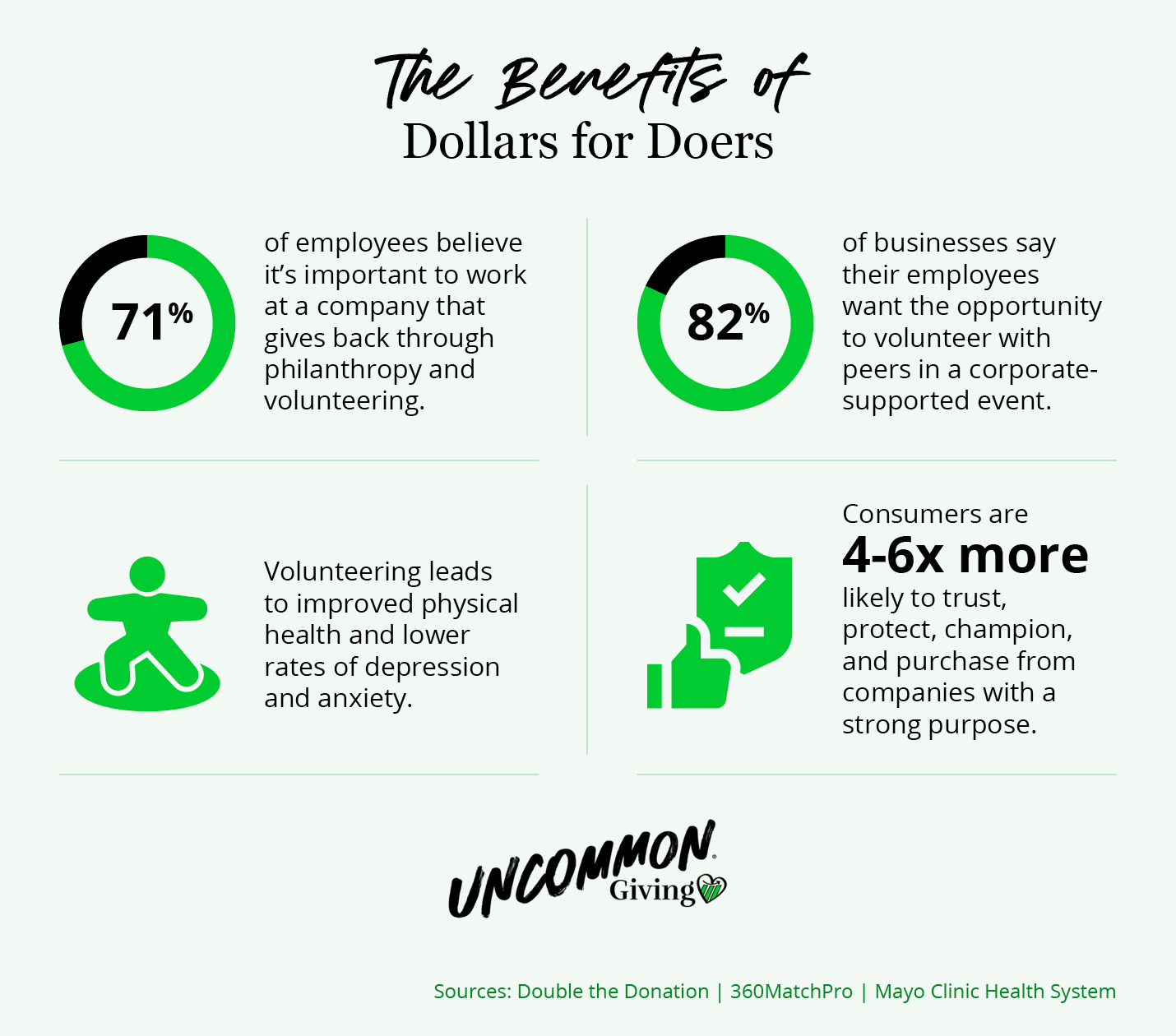
- 71% of employees believe it’s important to work at a company that gives back through philanthropy and volunteering. More people are looking for employers with a purpose and values that align with their own. With a Dollars for Doers program, you can attract and retain top talent by demonstrating your commitment to social impact.
- 82% of businesses say their employees want the opportunity to volunteer with peers in a corporate-supported event. By encouraging team members to give back to their community together, you can boost collaboration and productivity in the workplace.
- Volunteering leads to improved physical health and lower rates of depression and anxiety. Dollars for Doers can help your employees take better care of themselves, use fewer sick days, and avoid burnout.
- Consumers are 4-6x more likely to trust, protect, champion, and purchase from companies with a strong purpose. With so many options to choose from, consumers want to know that the brands they support will do more than just profit from their loyalty. A Dollars for Doers program demonstrates that you’re sharing your success with your community.
Plus, it’s not only your company and its employees that benefit from corporate giving programs. Dollars for Doers, in particular, provides nonprofits with both volunteer support and financial gifts. With the ever-increasing value of a volunteer hour now over $33, this means charitable organizations can access the resources they need to make their missions go even further.

Leading Examples of Dollars for Doers Companies
As Dollars for Doers programs become more popular among companies of all sizes, it can be helpful to look at existing examples and get inspired by their strategies. Use these top Dollars for Doers companies to inspire your planning:
Sandy Spring Bank
Sandy Spring Bank is a financial institution that provides commercial and retail banking, mortgage, and trust services in the Washington, D.C. metropolitan area. As part of its Dollars for Doers program, the company donates to a nonprofit once an employee volunteers for at least 50 hours with the organization. In a single year, employees contributed 4,462 hours to 208 organizations.
While Sandy Spring Bank allows employees to choose the causes they want to support, its philanthropic focuses are:
- Affordable housing
- Health and wellness
- Financial literacy and education
Beyond its community impact, Sandy Spring Bank’s CSR commitments include environmental sustainability, good governance, and workforce support.
Apriem Advisors
Apriem Advisors is an investment advisory firm located in Southern California. Through its Dollars for Doers program, the firm donates $10 for every hour volunteered by one of its employees. Beyond matching donations up to $1,000/year for each employee, Apriem also provides:
- Paid volunteer time off (VTO)
- Board membership training
- Pro bono services
- Sponsorships
Plus, Apriem partners with foundations, donor-advised funds, and charitable trusts to help them with charitable planning, investment management, and other guidance.
Heffernan Insurance Brokers
Heffernan Insurance Brokers provides business insurance, personal insurance, and financial services in various sectors. With “Do Good” as one of its values, the company has a Dollars for Doers program that awards $250 for 25 volunteer hours and $500 for 50 volunteer hours contributed by each employee within a year.
Additional philanthropic and wellness benefits for employees include:
- Up to four paid volunteer days per year
- Matching gifts at a 1:1 ratio
- Scholarship opportunities for all employees and their families
- Wellness challenges with prizes, such as virtual workouts
So far, Heffernan has donated over $22 million to various nonprofits in the U.S. and contributed over 39,000 volunteer hours across 250+ organizations nationwide.
RingCentral
RingCentral is a company that provides cloud-based communication products for organizations of all sizes. RCause, RingCentral’s CSR program, includes Dollars for Doers, which donates $10 to a nonprofit for every hour an employee volunteers with the organization.
RingCentral defines its three pillars of responsibility as:
- Environment
- Social
- Responsible governance
To uphold these pillars, the company also matches employee donations at a 1:1 ratio, awards grants, and allows employees to provide product discounts to registered nonprofits.

4 Tips to Boost Dollars for Doers Engagement
As you refine the details of your company’s Dollars for Doers program, keep these tips in mind to get your employees excited about participating:
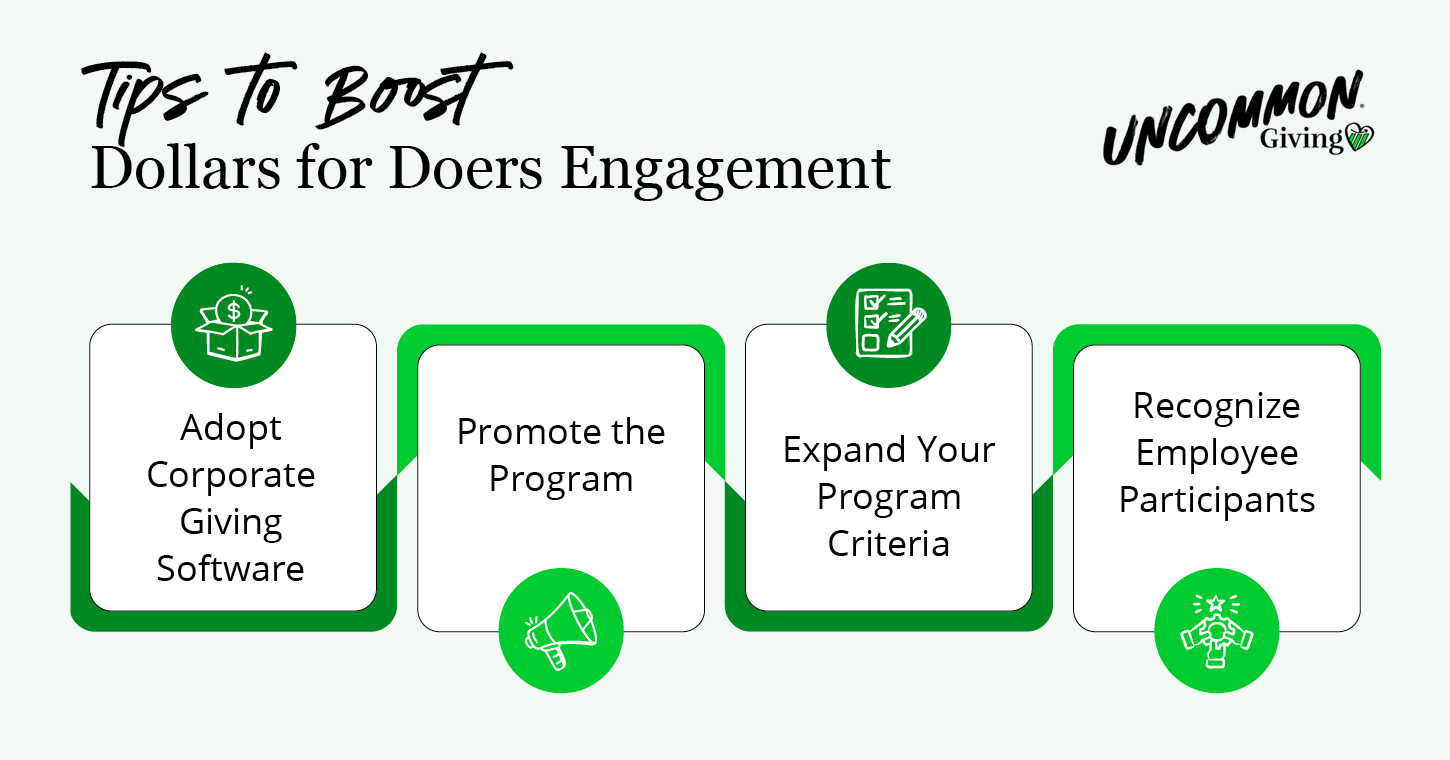
1. Adopt Corporate Giving Software
Your employees lead busy lives, which can sometimes get in the way of their hopes to make a difference in their community. By investing in a corporate giving platform, you can save time and effort for both your program administrators and employee participants. However, there are numerous options for you to choose from, each with its own strengths and specialties.
To find the best fit for your Dollars for Doers program and other CSR initiatives, follow these basic steps:
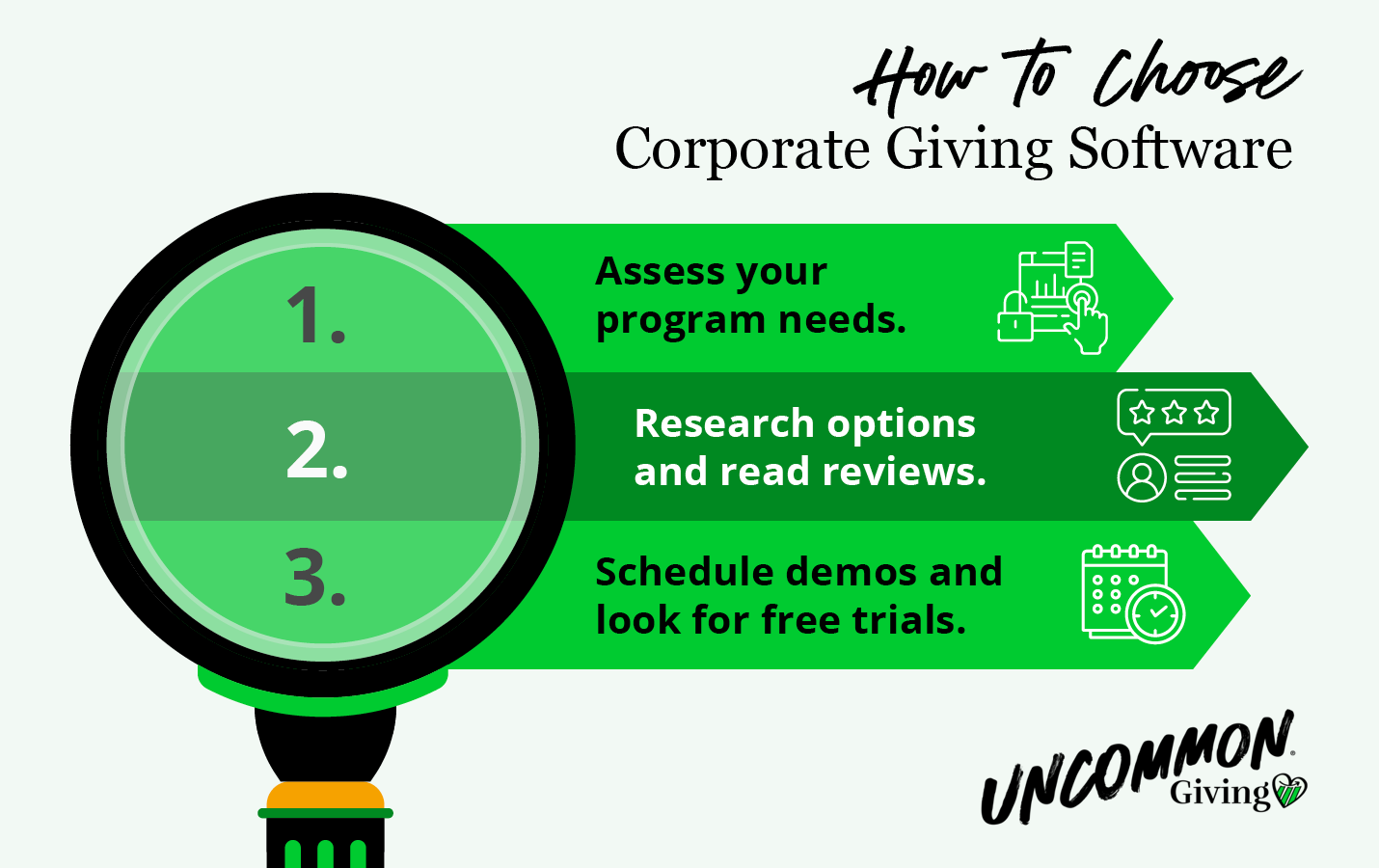
- Assess your program needs. For your Dollars for Doers program, you’ll want tools that make it easy for employees to log their volunteer hours and automate the application approval process for their grant requests.
- Research options and read reviews. Explore each software’s product page and read reviews from their customers to narrow down your options. Consider reaching out to peers at other companies to see if they can recommend a particular platform.
- Schedule demos to assess top picks. Get a closer look at your top choices by requesting demos. Consider each platform’s user experience and level of support available. Take this opportunity to ask the provider any specific questions about the software’s tools and functionality.
If possible, choose a corporate giving platform that comes with a mobile app. With this innovative tool, you can make it easier and more convenient than ever for employees to engage in your Dollars for Doers program.
2. Promote the Program
Don’t let your employees miss out on Dollars for Doers opportunities because they’re unaware of your program. Once you’ve finalized the details of your workplace giving initiatives, spread the word by:
- Making an announcement in a company-wide meeting.
- Adding program details in your onboarding materials and employee handbook.
- Sharing an overview on your company website.
- Scheduling Q&A sessions to give employees opportunities to learn more.
- Following up with updates and success stories on social media and email newsletters.
Additionally, encourage your nonprofit partners to spread awareness of volunteer grants and matching gift opportunities on their website. Best Friends Animal Society, for example, has a “Workplace Giving” page that invites donors and volunteers to check their eligibility with their employers.
3. Expand Your Program Criteria
To boost employee participation even further, consider broadening your eligibility criteria and enticing employees with the chance to amplify their impact. For example, you could:
- Extend participation to part-time employees, retired employees, and their spouses.
- Award a higher donation amount per volunteer hour or milestone.
- Lower the minimum number of hours employees must volunteer to be eligible for a grant.
- Increase your annual donation limit per employee.
- Offer VTO to help employees find more time to volunteer.
Then, to inspire more employees to start volunteering, consider hosting one or more paid, company-wide volunteer days throughout the year. These events can attract employees who want a chance to connect with their colleagues and feel closer to your company as a whole.
4. Recognize Employee Participants
Solidify philanthropy and volunteerism as part of your company’s culture by celebrating employees who participate in your Dollars for Doers program. Make sure they know that you appreciate their efforts with recognition methods such as:
- Thank-you emails or eCards
- Social media shoutouts
- Extra paid time off
- Gift cards or free meals
- Branded merchandise
By treating employees with gratitude, you can keep workplace morale high and ensure that they continue contributing to your CSR initiatives.
Wrapping Up: Inspiring Philanthropy in the Workplace
By launching a Dollars for Doers program, your company can go from simply keeping up with trends to setting the standard as an innovative CSR leader in its sector. Remember to report the impact of your CSR activities to build trust among your employees, nonprofit partners, and customers. Survey your employees on their experiences and preferences to unlock new improvement opportunities.
With a modern, comprehensive workplace giving solution on your side, you’ll turn a basic CSR initiative into a dynamic, well-maintained program that powers employee engagement, brand loyalty, and social change.
If you’d like to learn more about workplace giving and how it can transform your company for the better, check out these additional resources:
- What Is Workplace Giving? 5 Steps to Boost Engagement. Learn the basics of workplace giving programs, including their benefits and how to create your own today.
- 12 Top Corporate Volunteering Platforms for Making an Impact. Explore the top corporate volunteering solutions to streamline your Dollars for Doers program in this guide.
- Employee Giving 101: A Blueprint for Modern Companies. Discover how to engage more employees in your CSR strategy and learn from inspiring examples of companies with excellent employee giving programs.
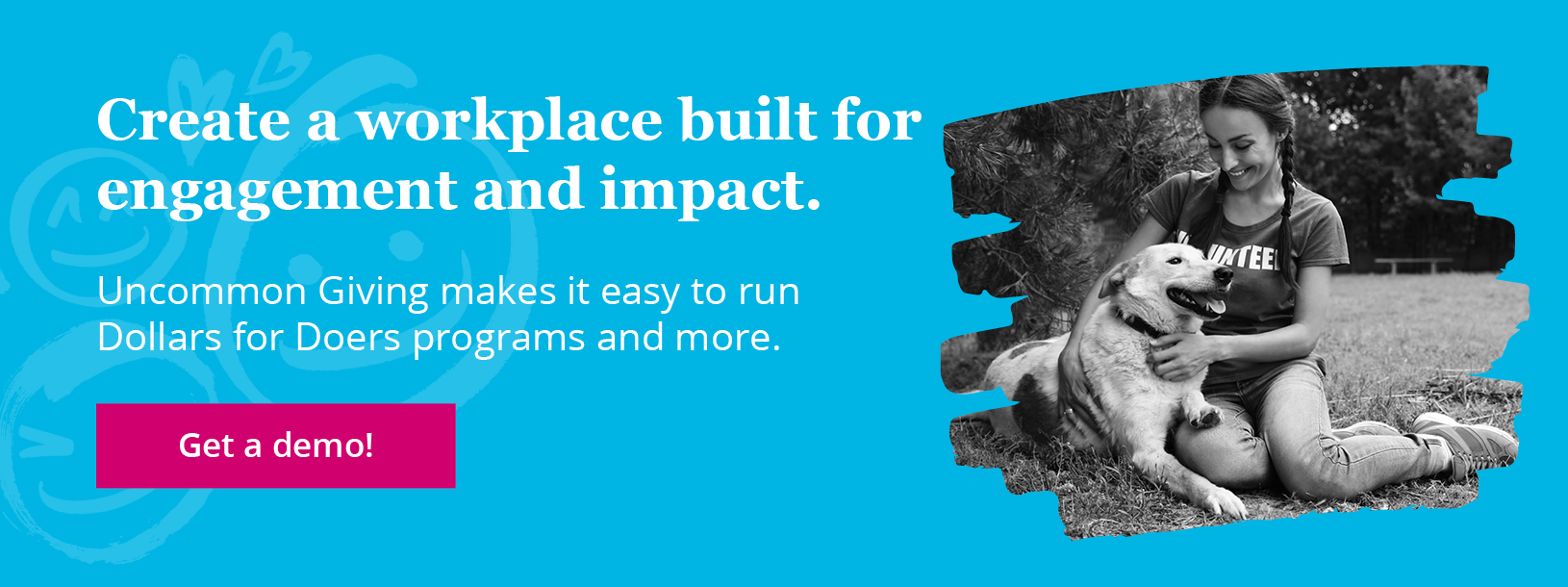
Andy Howell
Andy Howell is the CEO of Uncommon Giving, a Charleston-based social impact platform that helps companies engage employees in workplace giving and volunteering—think of it as “generosity-powered” employee engagement. Uncommon Giving provides modern, cost-effective tools for employers to live their corporate values, improve employee morale, and enhance brand reputation. Andy has spent the majority of his career working with SaaS companies serving the nonprofit, HR, and social impact spaces, including Blackbaud, Benevity, Benefitfocus, and Bloomerang. In his role today, he brings a distinct point of view to the meaningful connection between corporate social responsibility, employee engagement, and the desire to make the world a better place.


